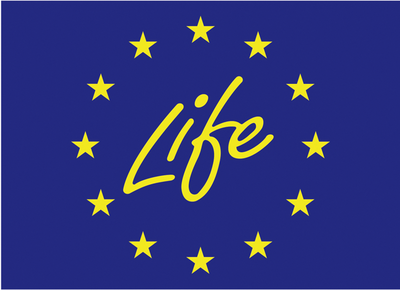Second day of LIFEGENMON conference Science for future forests: forest genetic monitoring and biodiversity in changing environments
Marko Bajc presented Forest Genetic Monitoring Manual, which is one of the key deliverables of LIFEGENMON project. Manual was written from experiences, gained through application of genetic monitoring in the project. It consists from 10 chapter, which cover variety of topics, from plot selection, plot establishment and maintenance, what is observed, how field work is commenced to laboratory and statistical analysis of collected, costs of monitoring and finally decision support system to support policy makers
During project LIFEGENMON Guidelines for conducting forest genetic monitoring of the seven tree species, namely Abies alba/Abies borisii-regis complex,Fagus sylvatica, Fraxinus excelsior, Pinus nigra, Populus nigra, Prunus avium, Quercus petraea/robur complex. Guidelines were presented in brief by Darius Kavaliauskas and Gregor Božič.
Setting monitoring schemes is usually expensive. This why is one of the aims of project LIFEGENMON was also cost assessment for forest genetic monitoring. Marko Bajc presented results of cost analysis for three project partners and breakdown of them for different levels, indicators, verifiers, activities etc. Costs increase substantially from one monitoring level to another. Interestingly, field observations came out as most intensive in terms of costs, thus good field work organisation was strongly emphasised. He further on stressed influence on costs by using properly trained and experienced personen, work organisation, and idea thatcontries sharing the same species or envirnomental zone can share monitoring tasks and laboratories, thus lower the overall costs.
Conservation of forest genetic resources means keeping genetic diversity high at all times emphasised first speaker, dr. Ivan Scotti, in last session of the day Forest resilience, conservation and management of forest genetic resources. Nevertheless, he continued, we need a multi-faceted approach to conservation which goes beyond genetic diversity. Multiple methods of assessment of forest genetic resources should be deployed at the same times as were are still lacking viable genetic diversitys information on majority of our forests. He stressed need to use modelling if we wish to really take advantage of adaptively significant variation in conservation programs
Dr. Cristina Vettori presented briefly the project LIFE SySTEMiC and its principal aim to apply the landscape genetic and genomic approach for examining best close-to-nature forest management regarding FGR in different European Forest Types for diverse forest management systems. She pointed out that adaptability of forest tree populations is enormous but not unlimited. It is thus important to provide a sustainable forest management systems with emphasis on preservation of forest genetic resources.
Kristina Sever presented application of virtual tool I+ Trainer, used together with Marteloscope on LIFEGENMON plots. Virtual tool is used to show principles of forest tending in stands and is valuable tool in education of foresters.
Session was concluded by Laura Guillardin, who presented new project to assess the genetic effects of applying Continuous Cover Forestry approach in non-native conifer UK populations composed by Pseudotsuga-menziesii, Thuja-plicata and Tsuga-heterophylla.During project, researchers will compare genetic diversity parameters between canopy trees and natural regeneration by testing populations from natural distributions in North America and non-native populations in the UK.












 Saving...
Saving...
Leave a Comment